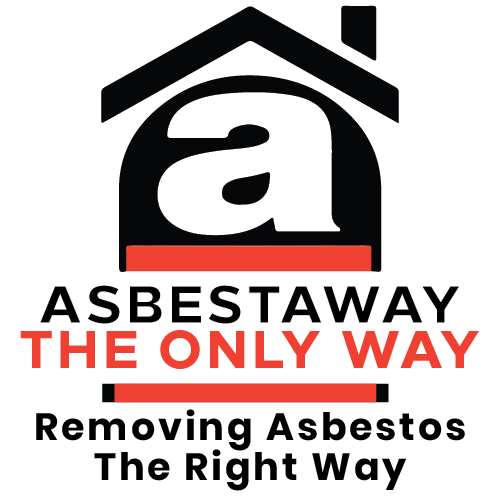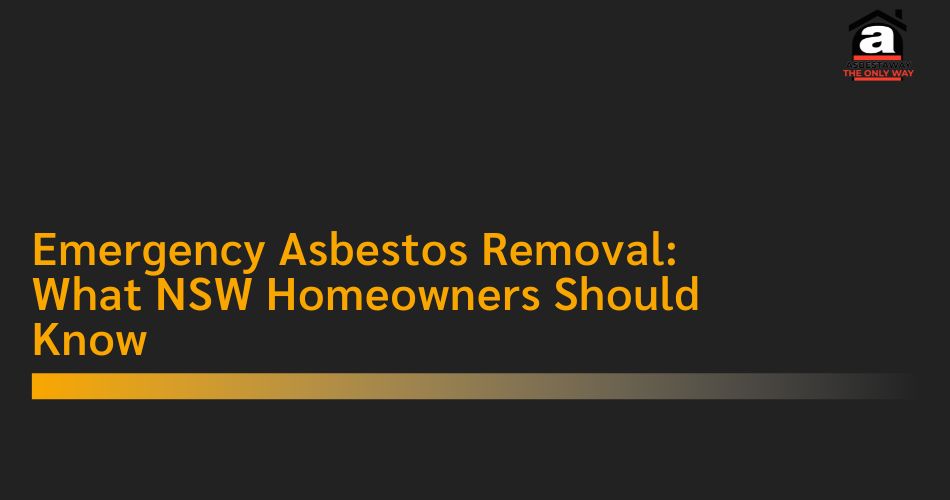Asbestos, a once-popular building material in Australia, poses significant health risks when disturbed. This is especially true for homeowners in New South Wales (NSW), where many properties built before the 1990s may contain asbestos. When the integrity of these materials is compromised—due to renovations, water damage, or general wear and tear—emergency asbestos removal becomes a critical concern. Exposure to airborne asbestos fibers can lead to severe health issues, including lung cancer, asbestosis, and mesothelioma.
For NSW homeowners, understanding the urgency of emergency asbestos removal is essential for safeguarding their health and property. This guide aims to provide valuable insights into what constitutes an emergency situation, the steps involved in the removal process, and why choosing professional services, like Asbestaway, is vital for effective and safe management. By equipping yourself with knowledge about emergency asbestos situations, you can make informed decisions that prioritize safety and compliance with local regulations.
Emergency asbestos situations arise when there is an immediate risk of exposure to asbestos fibers, often due to unforeseen circumstances. Recognizing the signs of such emergencies is crucial for ensuring the safety of you and those around you.
What Constitutes an Emergency?
- Severe Weather Damage: Natural disasters, such as storms or floods, can compromise the integrity of buildings, leading to the potential release of asbestos fibers. If you notice water damage or structural issues following a weather event, it’s important to assess the situation for asbestos risks.
- Renovations Gone Wrong: Unplanned disturbances during DIY renovations can expose previously hidden asbestos materials. If you accidentally disturb these materials, it creates an immediate health risk, necessitating urgent professional intervention.
- Structural Failures: If a building experiences a collapse or significant structural damage, the risk of airborne asbestos increases. In such cases, it’s essential to evacuate the area and contact professionals immediately.
- Visible Asbestos Debris: Discovering loose asbestos debris during routine maintenance or inspections can signal an urgent need for removal. Any visible signs of deteriorating asbestos materials should prompt immediate action.
- Occupant Complaints: If occupants report symptoms that could be related to asbestos exposure, such as persistent coughing or respiratory issues, it may indicate a hidden asbestos problem that requires immediate assessment.
Recognizing these emergency situations allows homeowners to take swift action, minimizing health risks associated with asbestos exposure.
The Risks of Asbestos Exposure
Understanding the health risks associated with asbestos exposure can highlight the importance of immediate action in emergency situations. Asbestos fibers, when inhaled, can lead to serious health conditions, including:
- Asbestosis: A chronic lung condition caused by inhaling asbestos fibers, leading to scarring and inflammation of lung tissue. Symptoms include shortness of breath and persistent cough.
- Lung Cancer: Long-term exposure to asbestos significantly increases the risk of developing lung cancer, particularly in individuals who smoke.
- Mesothelioma: A rare and aggressive cancer primarily caused by asbestos exposure, affecting the lining of the lungs, abdomen, or heart.
The latency period for these diseases can range from 10 to 50 years, making early detection and intervention crucial. Understanding these risks reinforces the need for prompt action when faced with potential asbestos exposure.
The Process of Emergency Asbestos Removal
Step 1: Assess the Situation
When faced with a potential asbestos emergency, the first step is to assess the situation carefully. Identify the source of the problem and determine whether asbestos is present. If you suspect asbestos but aren’t sure, avoid disturbing the material and seek professional help for an assessment.
Step 2: Evacuate the Area
If asbestos is suspected to be airborne, evacuate the area immediately. Ensure that everyone in the vicinity, including pets, leaves the space to minimize exposure risk. Seal off the affected area using plastic sheeting if possible to prevent the spread of asbestos fibers.
Step 3: Contact Professionals
Once the area is secured, contact a licensed asbestos removal company immediately. Professionals have the expertise and equipment to handle emergency situations safely. They will conduct a thorough assessment and determine the best course of action.
Step 4: Conduct Testing
Qualified professionals will typically conduct asbestos testing to confirm its presence and assess the extent of contamination. This often involves taking samples from suspected materials and analyzing them in a laboratory.
Step 5: Develop a Removal Plan
After confirming the presence of asbestos, the removal team will create a detailed plan outlining the procedures to be followed. This plan will include containment strategies, the type of equipment to be used, and safety measures to protect workers and occupants.
Step 6: Execute the Removal
The actual removal process involves several safety protocols:
- Containment: The work area will be sealed off to prevent the spread of fibers.
- PPE: Workers will wear appropriate personal protective equipment, including respirators and disposable suits.
- Wet Methods: Asbestos materials will often be wetted down to minimize dust during removal.
- Disposal: All asbestos waste must be disposed of according to local regulations, typically in specially designated landfills.
Step 7: Clean-Up and Clearance
After the removal is complete, a thorough clean-up is conducted. This includes vacuuming the area with HEPA-filtered vacuums and wiping down surfaces. An independent clearance inspection may also be performed to ensure that no asbestos fibers remain.
Step 8: Post-Removal Monitoring
Even after removal, ongoing monitoring may be necessary to ensure that no additional asbestos risks arise. Regular inspections can help identify potential issues before they become emergencies.
Why Choose Asbestaway for Professional Asbestos Removal in New South Wales
1. Expertise and Experience
Asbestaway specializes in asbestos removal services throughout New South Wales. Their team is highly trained and experienced in handling emergency situations, ensuring that all procedures are conducted safely and efficiently.
2. Comprehensive Services
From initial assessments to post-removal monitoring, Asbestaway offers a full range of asbestos-related services. This comprehensive approach means you can rely on them for every aspect of asbestos management.
3. Commitment to Safety
Safety is paramount when dealing with asbestos. Asbestaway follows strict safety protocols, utilizing advanced containment techniques and PPE to protect both workers and occupants during the removal process.
4. Compliance with Regulations
Asbestaway is well-versed in local, state, and federal regulations regarding asbestos removal. Their commitment to compliance ensures that all work is conducted legally and responsibly, protecting you from potential liabilities.
5. Customer-Centric Approach
With Asbestaway, customer satisfaction is a top priority. Their team is dedicated to clear communication, answering your questions, and addressing your concerns throughout the process. They strive to make the experience as smooth and stress-free as possible.
6. Post-Removal Support
Even after the removal process is complete, Asbestaway provides ongoing support and advice. They can help you understand how to maintain a safe environment and monitor for any potential asbestos risks in the future.
Conclusion
Emergency asbestos removal is a critical issue for homeowners in New South Wales, especially in properties built before the 1990s. Recognizing the signs of an asbestos emergency and taking prompt action can safeguard your health and that of your loved ones. By understanding the removal process and choosing a professional service like Asbestaway, you can ensure that asbestos is handled safely and effectively.
Asbestos exposure poses significant health risks that can last for years, making it essential to act quickly when potential hazards arise. Prioritizing safety, compliance, and expert assistance can help you navigate the complexities of asbestos removal, providing peace of mind and a healthier living environment. Don’t hesitate to seek professional help if you suspect asbestos in your home; your health and safety depend on it.

